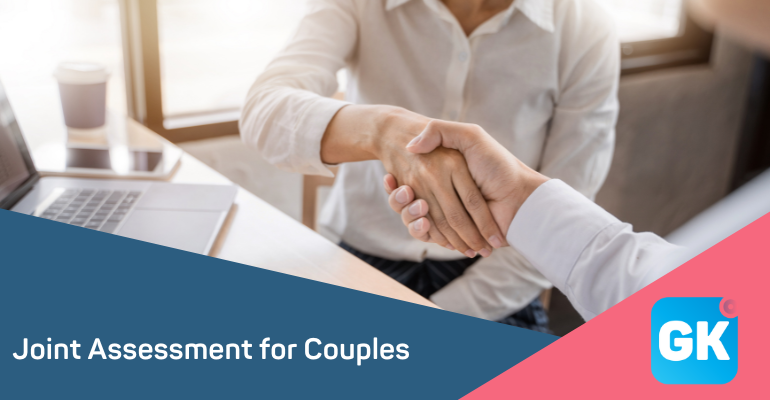Joint Assessment for Couples

Joint Assessment for Couples
Joint assessment is the option that benefits most couples. Under joint assessment you are chargeable to tax on your combined total income. This is the option that is applied when you notify Revenue that you are married or in a civil partnership. This does not prevent you from choosing the other options of separate assessment or separate treatment. You can update your civil status and request joint assessment through ‘Manage My Record’ or ‘My Profile’ through ROS. You can also upload any supporting documentation. Your spouse will be required to confirm the request by signing into myAccount and confirming the status update.
Assessable spouse or civil partner
The assessable spouse or nominated civil partner is responsible for filing tax returns and paying any tax due. How to select an assessable spouse or nominated civil partner. You can decide which of you is to be the assessable person. You can do this by either: using ROS to update your civil status and select your basis of assessment or completing a Spouse Election form.
Sending a letter, signed by both of you, nominating the assessable partner. You must do this on or before 31 March in the year you want the selection to apply. You do not have to make the selection. If no selection is made, the spouse or civil partner with the higher income automatically becomes the assessable spouse or nominated civil partner. The assessable spouse or nominated civil partner does not change until you and your spouse or civil partner either select either:
•Select the other spouse or civil partner
•Select for Separate Assessment or Separate Treatment.
•Allocating tax credits, reliefs and rate bands
Joint assessment allows you to allocate (transfer between you) most of your tax credit reliefs and ratebands with your spouse or civil partner. The Tax Rates, Bands and allowances that apply to you depends on if one or both of you have an income.
You cannot transfer:
•Employee Tax Credit
•Employment Expenses
The Increased Rateband
If you and your partner both have taxable income, use ROS to allocate your tax credits and rate band however you wish. You will both receive updated Tax Credit Certificates showing the allocation of your credits and rateband. If you do not allocate the tax credits and reliefs, they are all given to the assessable spouse. You cannot claim both the Home Carer Tax Credit and the increased rate band. You should claim whichever is more beneficial based on your personal circumstances Joint assessment where one partner is self-employed If either you or your partner are self-employed joint assessment can still apply.
You can decide if you wish to pay:
Most of the tax under the PAYE system a lump sum under self-assessment You can do this by how you allocate your credits and rate band. If you choose to pay most of your tax through PAYE, your credits can be transferred to the self-employed person. The Employee Tax Credit and employment expenses cannot be transferred.
Refunds
Any refunds due at the end of the year will be repaid to each person in proportion to the amount of tax each has paid
Why Work with Gallagher Keane Chartered Accountants?
Why Work with Gallagher Keane Chartered Accountants?
Gallagher Keane provide professional accounting, tax, and financial advice. We can help you to make better informed business decisions to reach your goals effectively.
Get In Touch
If you are interested in finding out how we can help your business achieve business brilliance, please book a no obligation call.


